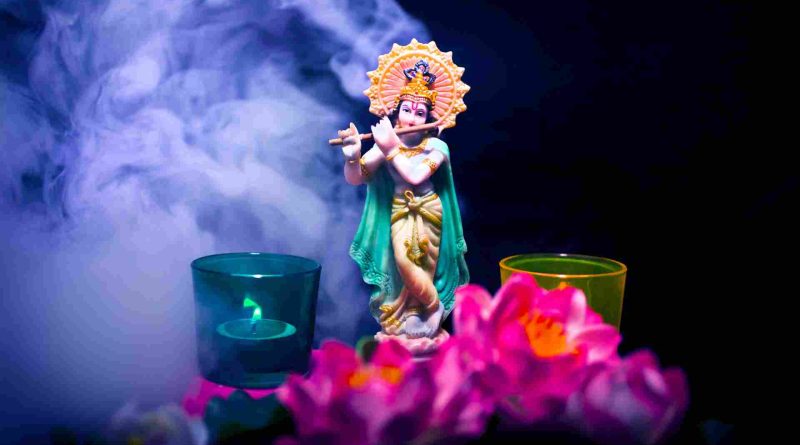Feast of the Divine: Exploring Janmashtami’s Culinary Tapestry
From the rustic allure of kuttu to the delicate essence of makhane, an assortment of ingredients, steeped in tradition, now stands as revered staples cherished for their nutritional bounty.
Reflecting on my upbringing in Lucknow, Janmashtami evokes fond memories of quaint celebrations, where ingenuity and resourcefulness converged to craft vivid tableaus depicting the mystical realm of Braj. Against the backdrop of a tempestuous night, legend has it that Lord Krishna emerged, bathed in the ethereal glow of midnight, amidst the monsoon symphony of the Shravan month.
Amidst our quest for azure chalk and vibrant rangoli powder to recreate the torrential Yamuna and verdant landscapes, a cornucopia of festive delights punctuated the air. What was perceived as fasting fare transcended mere sustenance, embodying a jubilant feast to commemorate the occasion. Janmashtami, unlike any other fast, embraced a spirit of exuberance rather than austerity, where culinary offerings were revered for their nourishing essence, aligning with the sanctity of birth rites.
A glimpse into the traditional culinary repertoire of Janmashtami unveils a striking resemblance to postpartum traditions observed in Indian households. Echoing the principles of Ayurveda, nutrient-rich seeds, fortified panjeeri infused with gum, and soul-warming concoctions steeped in ghee and wholesome spices grace the palate, reminiscent of maternal nourishment rituals.
A distinctive hallmark of Janmashtami tradition lies in the sacred offering of seeds as prasad. Across the heartlands of Uttar Pradesh and Delhi, platters adorned with chironjee, dried melon seeds, and makhane undergo a delicate alchemy, lightly roasted in ghee before crystallizing into delectable treats with a drizzle of sugary nectar. These sacrosanct delicacies, meticulously crafted, endure beyond the festival’s ephemeral embrace.
Chironjee, a relic of ancient Indian gastronomy, languishes in obscurity, its essence eluding linguistic confines. Revered by the Mughal emperor Babur, who likened it to a fusion of walnut and almond, chironjee occupies a revered pedestal in Janmashtami’s culinary tapestry.
Central to the midday repast for fasting devotees is the celestial concoction of kheer, wherein chironjee and makhane, cocooned in creamy milk, intertwine with dried figs and raisins to birth the quintessential mewa ki kheer, a delicacy reserved solely for this sacred occasion.
Lotus seeds, emblematic of purity and divine grace, have garnered contemporary acclaim as a superfood imbued with calcium and magnesium, satiating hunger pangs and appeasing discerning palates alike. For fasting adherents, these ethereal orbs, ensconced in golden ghee, offer sustenance and spiritual solace in equal measure.
Buckwheat, or kuttu, emerges as a gluten-free alternative revered by epicureans seeking respite from conventional wheat flour. From humble pooris to delectable pakoris, kuttu transcends culinary boundaries, permeating diverse cuisines with its wholesome allure.
In the rustic enclaves of Uttar Pradesh, Haryana, and Rajasthan, the venerable tradition of dhaniya ki panjeeri reigns supreme. A symphony of roasted coriander seeds, ensconced in ghee and embellished with sugar and dried fruits, embodies a quintessential fasting indulgence, steeped in tradition and therapeutic merit.
As the ritualistic fervor culminates in sacred worship, panchamrita emerges as the pièce de résistance of Janmashtami’s culinary saga. A harmonious blend of honey, milk, curd, ghee, and sugar, this ambrosial elixir harkens back to ancient rites, symbolizing auspicious beginnings and divine blessings—a fitting tribute to the celebration of life’s eternal cycle.

